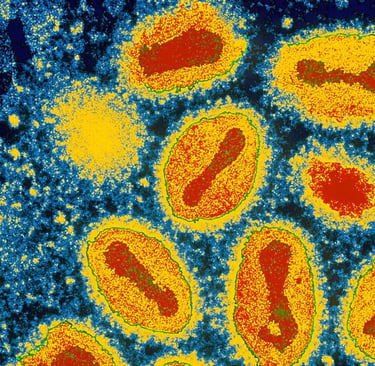Resurrecting the Past: Ancient Pathogens in Antarctic and Siberian Permafrost
Sahil Sharma
10/20/20232 min read


Permafrost, the permanently frozen ground of Earth's polar regions, holds many secrets in its icy grasp. One of the most intriguing revelations from these frozen depths is the discovery of ancient pathogens – microorganisms and viruses that were long considered extinct. In this article, we'll embark on a journey to uncover the riveting world of ancient pathogens hidden in Antarctic and Siberian permafrost.
The Ancient Pathogens of Permafrost
Permafrost, with its frigid temperatures and preserved environments, serves as a remarkable time capsule. It can trap microorganisms, viruses, and even larger life forms, keeping them in suspended animation for thousands or even millions of years. These frozen remnants of the past offer scientists a unique opportunity to study ancient pathogens, which may have implications for our understanding of the past, present, and future.
Unearthed in Antarctica: The Lost World of Microbes
In Antarctica, where the ice can be over a million years old, researchers have made some astounding discoveries. Ancient microbes, including bacteria and viruses, have been found lurking in the icy expanse. These microorganisms challenge our perception of life's resilience and longevity.
Some of the most notable discoveries in Antarctica include bacteria that are over 1,000,000 years old and still viable. These microorganisms have adapted to harsh conditions, and their existence hints at the potential for life to persist in extreme environments both on Earth and, perhaps, on other planets.
Siberian Permafrost: The Mammoth’s Curse?
Siberia, with its vast and ancient permafrost, is another hotspot for ancient pathogens. Here, scientists have uncovered not only prehistoric creatures like the woolly mammoth but also long-dormant viruses. One such virus, called Mollivirus sibericum, was found in Siberian permafrost and dates back 30,000 years.
The potential reanimation of ancient viruses, even ones that have not existed in thousands of years, has raised concerns. As the climate warms and permafrost thaws, these viruses could be released, presenting a new challenge for scientists and public health experts.
Pandora’s Box: The Risks and Rewards
The idea of resurrecting ancient pathogens might conjure up images of doomsday scenarios from science fiction, but the reality is more complex. While ancient pathogens can pose risks if mishandled or if released due to permafrost thaw, they also offer valuable insights into our planet's history.
Studying these microorganisms and viruses can help us understand the evolution of life, the development of diseases, and how organisms adapt to extreme conditions. Such knowledge is critical for both advancing our understanding of biology and improving public health practices.
The Permafrost Paradox
As scientists continue to unearth the secrets of ancient pathogens in permafrost, they are faced with a paradox. While the study of these microorganisms has the potential to advance scientific knowledge and address current challenges, it also carries risks associated with the accidental release of dormant pathogens.
The preservation of permafrost is essential not only for research but also for environmental conservation and public health. It highlights the delicate balance between uncovering the past and ensuring a safe future.
